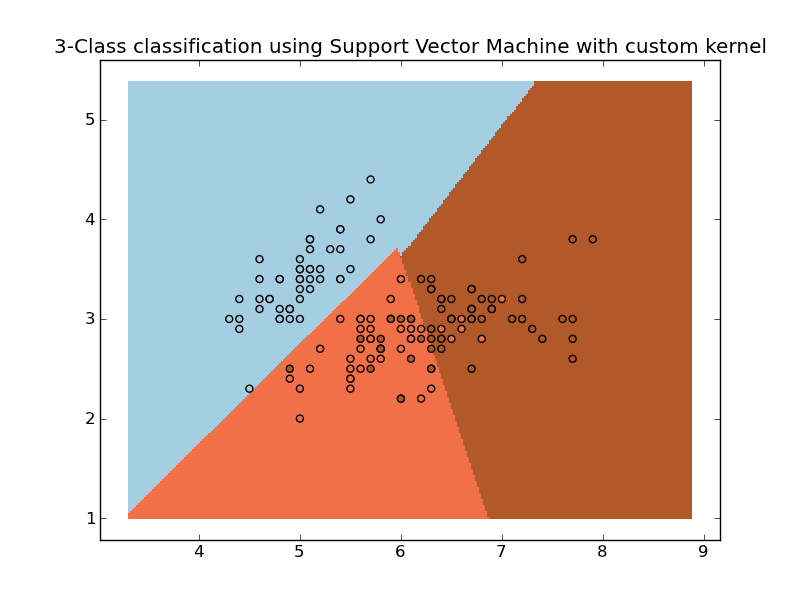SVM with custom kernel¶
Simple usage of Support Vector Machines to classify a sample. It will plot the decision surface and the support vectors.

Python source code: plot_custom_kernel.py
print __doc__
import numpy as np
import pylab as pl
from sklearn import svm, datasets
# import some data to play with
iris = datasets.load_iris()
X = iris.data[:, :2] # we only take the first two features. We could
# avoid this ugly slicing by using a two-dim dataset
Y = iris.target
def my_kernel(x, y):
"""
We create a custom kernel:
(2 0)
k(x, y) = x ( ) y.T
(0 1)
"""
M = np.array([[2, 0], [0, 1.0]])
return np.dot(np.dot(x, M), y.T)
h = .02 # step size in the mesh
# we create an instance of SVM and fit out data.
clf = svm.SVC(kernel=my_kernel, C=100)
clf.fit(X, Y)
# Plot the decision boundary. For that, we will asign a color to each
# point in the mesh [x_min, m_max]x[y_min, y_max].
x_min, x_max = X[:, 0].min() - 1, X[:, 0].max() + 1
y_min, y_max = X[:, 1].min() - 1, X[:, 1].max() + 1
xx, yy = np.meshgrid(np.arange(x_min, x_max, h), np.arange(y_min, y_max, h))
Z = clf.predict(np.c_[xx.ravel(), yy.ravel()])
# Put the result into a color plot
Z = Z.reshape(xx.shape)
pl.set_cmap(pl.cm.Paired)
pl.pcolormesh(xx, yy, Z)
# Plot also the training points
pl.scatter(X[:, 0], X[:, 1], c=Y)
pl.title('3-Class classification using Support Vector Machine with custom'
' kernel')
pl.axis('tight')
pl.show()
